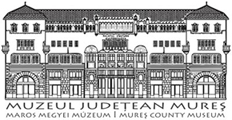Marisia - Maros Megyei Múzeum Évkönyve 33/4. (2013)
Articles
144 E. Gáll the Danube, and an old Croatian principality south of the River Sava.51 This is the time when churchyard cemeteries appear in the territory of the Moravian principality such as the churches in Mikulcice, Staré Mésto, Uherské Hradisté Sady, Modrá (Moravia), Levy Hradec, Budec (Böhmen), Devin, Nitra (actually Slovakia, northern part of the former Hungarian Kingdom), which meant the (temporary) triumph of Christianity.52 However, the Christian faith of these communities was superficial. Although their deceased were buried near churches, there is a great amount of grave goods in their graves, mainly ornamented spurs and weapons (axes, sabres ).53 In the territory of the western Hungary churchyards were abandoned after the Hungarian conquest. The noble families coming from the eastern or southeastern regions of the Carolingian Empire, from Bavaria and the region of the Alps, who had been brought up in Christianity through generations, withdrew to the safer western regions and only those remained who had little to lose.54 After the battle of Bratislava in 907, in the first half of 10th century the typical pagan cemeteries of the conquering Hungarians appeared in these regions.55 From the end of the 10th to the 12th century, Christianity and its state institutions triumphed in Central- and Northern Europe. As a result, from the 11th century, churchyard cemeteries can be documented in Poland,56 as well as in Northern- Europe, mainly in Denmark, the southern regions of Norway and Southern-Sweden, here probably due to missionaries coming from the East.57 In conclusion it can be stated that churchyards, which came into fashion’ in the 7th - 8th centuries, became the obvious archaeological symbol of institutionalised Christianity in time. Churches and the graveyards around them are the archaeological signs of the western Christian state, bishopries, parishes and Christian communities. In short: medieval (western) Europe. 51 Buric 2007,105-123; Perkic 2008, 63-122; Petrinec 2005, 173-212. 52 Ruttkay 2005, 31-59; Schulze-Dörrlamm 1993, 557-620. 53 Schulze-Dörrlamm 1993, abb. 12, abb. 23, abb. 29, abb. 36, abb. 4L 54 Szőke 2005, 26. 55 К. К. 1996. 56 Zoll-Adamikowa 1988, 183-229; Zoll-Adamikowa 1995, 174-184; Kara - Kurnatowska 2000a, 323; Kara - Kurnatowska 2000b, 530. 57 Kieffer-Olsen 1997, 185-189; Lagerlöf 1999; Staecker 2001, 187-258; Rundkvist 2003, 79—82; Vretemark -Axelsson 2008, 209-219. Finally, it must be mentioned that no regulations similar to those made in Central and Western Europe (by the aforementioned synods) were made in the Byzantine Empire.58 6. The research of churchyards in the Carpathian Basin The results of the research of churchyards (including burials inside the churches) in the Carpathian Basin were on the highest level in European research until the middle of the 1990’s.59 Until the early 70s of the past century the matter of the churchyards was particularly researched by Hungarian archaeologists. All western European synthesis papers were based on their results (for example: G. P. Fehring, I. Fingerlin). The beginning goes back to the time of the Austro-Hungarian Monarchy in 1882 when the cemetery from the Árpádian era was excavated by Béla Posta in Rákospalota. Postás main achievement was that he did not only collect the finds but he also recorded the positions of skeletons and the structure of the cemetery section.60 This was the conception he taught to his students, István Kovács, Márton Roska and János Banner in Cluj. Such burial elements as armor on the coffin or skeleton laid on ashes were first observed in the 30 graves excavated during the reconstructions of the cathedral in Alba Iulia in 1912-1913.61 The work pioneered by Béla Posta was continued by Kálmán Darnay and Gyula Kisléghy Nagy with more őrless professionalism.62 All in all, science in the Monarchy at the turn of the century was not interested in cemeteries that were difficult to research or those with poor furnishings. After 1920 churchyards of this kind were mainly excavated on the Great Plain. These excavations were conducted by Kálmán Szabó, Alajos Bálint (Kaszaper) and László Gerevich (Csút ).63 László Gerevich was the first to analyse the map of the cemetery in Csút, and he managed to follow the changes in burial customs such as grave orientations and arm positions. Based on 58 The connection between the churches and cemeteries in the late Antiquity stemmed from the issue of ad sanctos and medieval Byzantine cemeteries constitute a direct continuation of this. Bollók 2014. 59 Ritoók 2010, 473. 60 Hungarian National Museum, Budapest. Manuscript, in. nr.: 5/35/4. Ritoók 2010, 474. 61 Posta 1917. 62 Darnay 1896, 254; Kisléghi Nagy 2010. 63 Szabó 1938; Bálint 1936, 222-239; Bálint 1938, 139-190; Bálint 1939, 146-164; Gerevich 1943, 103-160, 500-513.
